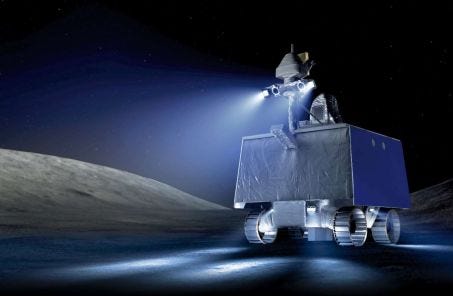The dark side of the Solar System: ice water in lunar craters?
The Moon is dry, very dry. No water has ever bathed the shores of its seas. And yet, various clues suggest that the H2O molecule is indeed ther
Absence of atmosphere and thus of clouds and rain, scorching days... the Moon is dry, very dry. No water - liquid or vapor - has ever bathed the shores of its seas. And yet, various clues suggest that the H2O molecule is indeed there. In particular, the Nasa Lunar Prospector and LRO probes have detected in 1998 and 2009 respectively large quantities of hydrogen at the poles, indicating a possible presence of ice.
Ice hidden in the shadow of the relief
"This ice would have been produced over time from water brought by micrometeorites, or created during chemical reactions between the hydrogen nuclei emitted by the Sun and the oxygen in the rocks, explains Pierre-Yves Meslin, researcher at the Institute for Research in Astrophysics and Planetology, and in charge of the Dorm experiment to study the mechanisms of migration of selenite gases on board the future Chinese mission Chang'e 6. The heat of the day would tear off from the surface of the Moon these water molecules which, passed in the state of gas, would travel a certain distance before being redeposited on the ground during the night. Those that would fall to the bottom of the craters, where temperatures are reputed never to exceed -173 °C, would remain trapped there as ice." Ice hidden in the shadow of the reliefs... But in what quantity?
"We speak of a content of a few percent at the depth of a few decimeters where it was measured," continues the astrophysicist. If the signals detected correspond well to ice, and not to water or hydrogen chemically bound to minerals or grains ... ".
Explore the penumbra of the Selenite craters to look for the famous ice!
In 2023, Nasa's Viper astro-mobile could allow us to know more. Objective: explore the penumbra of the Selenite craters to look for the famous ice! A 430 kg rover will be deposited in a region of the South Pole and will carry out a series of drillings inside the small crater Nobili, before analyzing the volatile elements present inside the collected samples. The hope is to determine how much water the lunar terrain really contains. And thus to establish if this water could, one day, be exploited... for example, for the production of fuel for rockets going to Mars! But that's another story…
Source : https://www.sciencesetavenir.fr/espace/systeme-solaire/la-face-cachee-du-systeme-solaire-de-l-eau-glacee-dans-les-crateres-lunaires_162938





